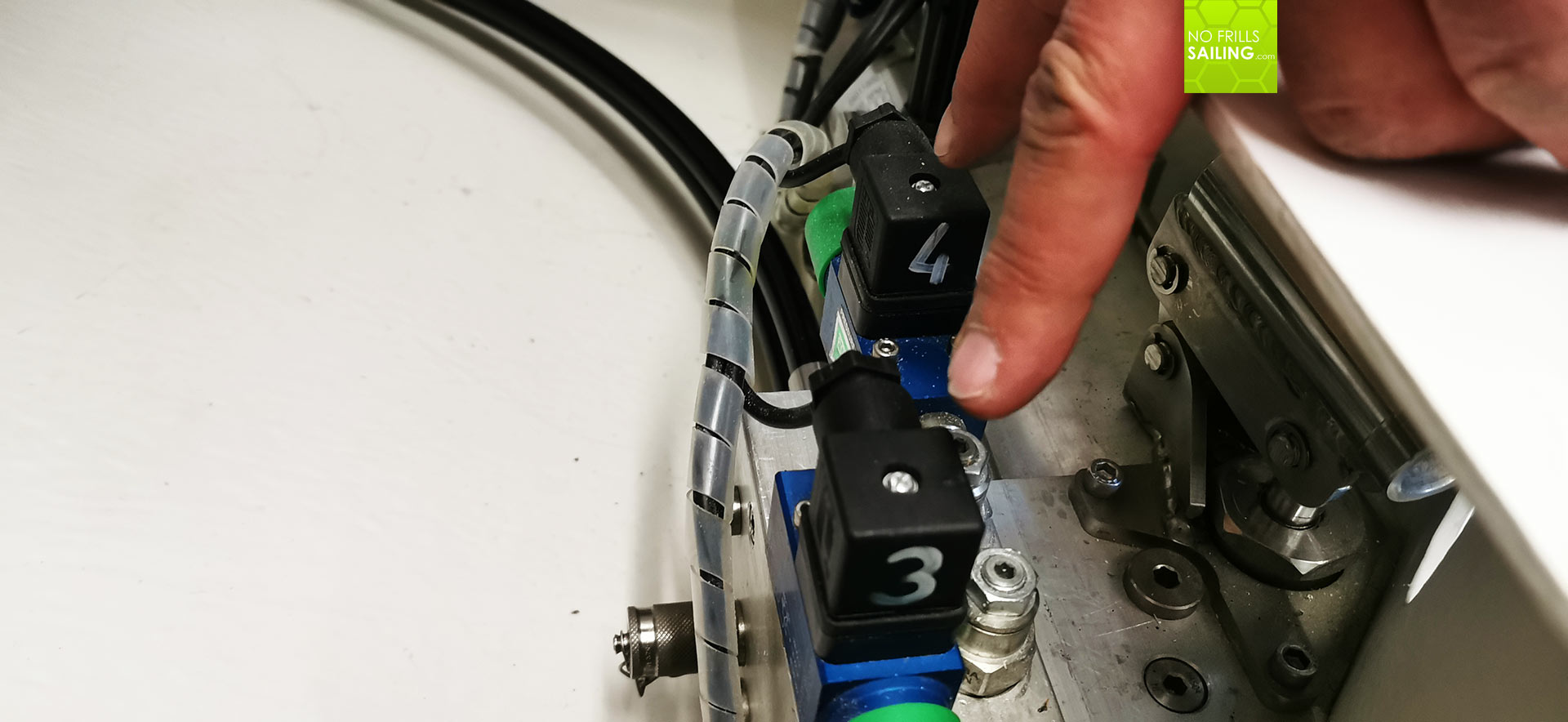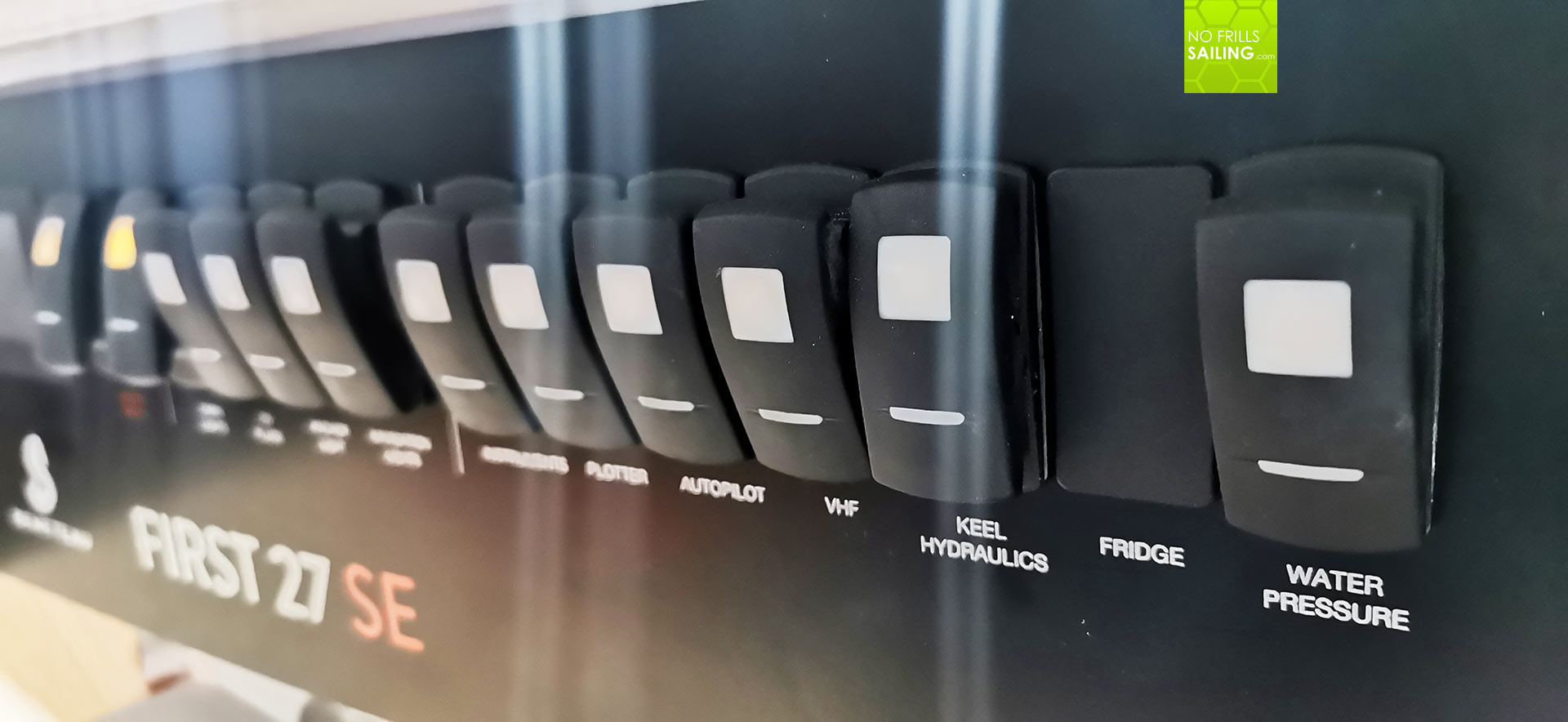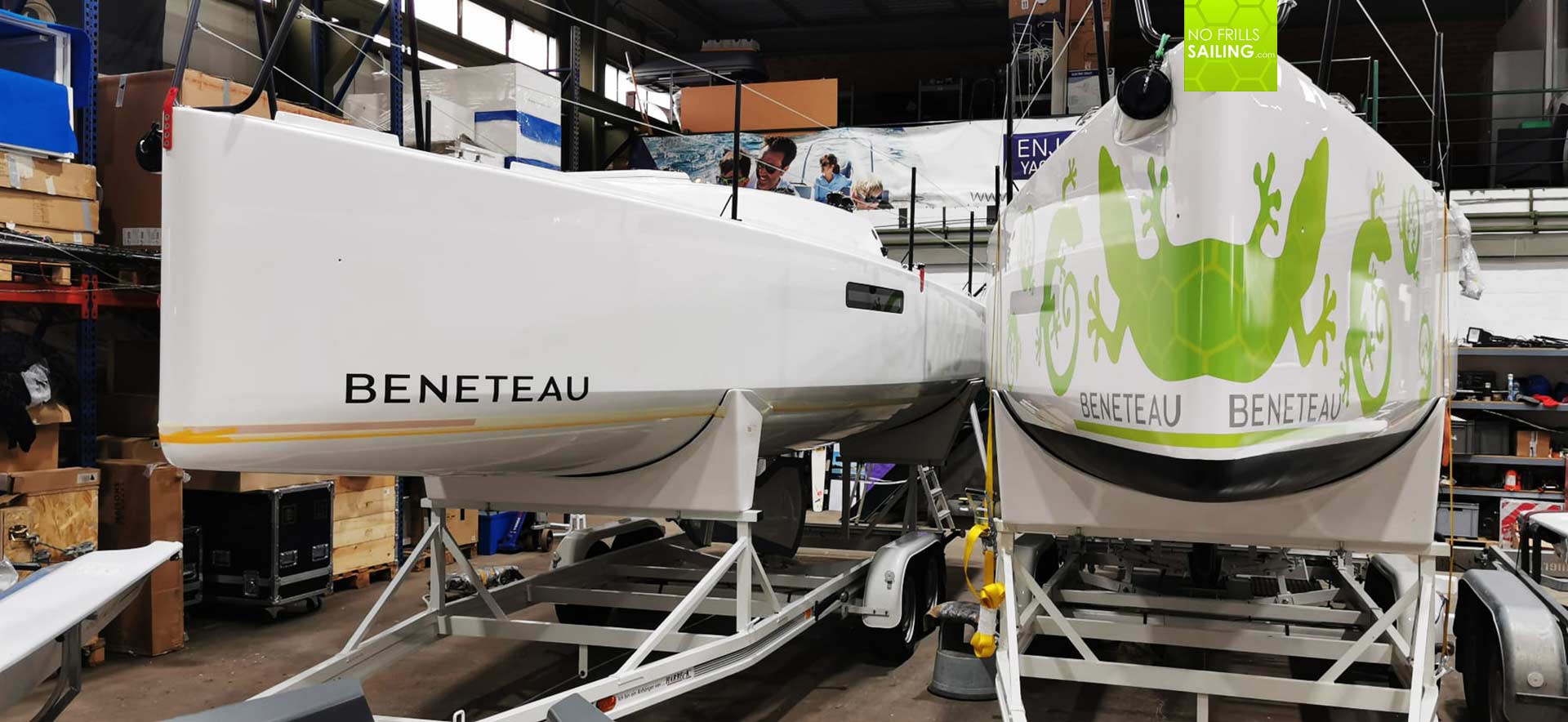Although I never really used the advantages of an hydraulic swing keel that much in my first season with GEKKO, I do fully appreciate the opportunities which such a variable draft boat has. Entering shallow anchorages for better protection, vice versa with shallow areas in otherwise fully occupied marinas and such. My First 27 SE comes with a swing keel in standard which is operated by hand utilizing a steel lever.

An option in the price list is the electric hydraulic pump which makes retracting and lowering the keel as easy as ABC: Just the push of two buttons (for safety reasons) lets the keel either come up or go down in a matter or seconds. This works just fine – in situations when it has to be fastly done (maybe you are entering a shallow area, bad weather, no time for pumping by hand), it is just a quick dash down to the main switch board and up it goes (or down).
Pre-season checkup or the swing keel and hydraulic system
Now with the season coming up in a fast pace and GEKKO nearing the finalization of her upgrade-projects, I asked our hydraulics specialist Olaf to give me a short introduction into hydraulics, pumping systems, load distribution and most important, a short to-do list of how to check a swing keel hydraulic system before bringing the boat to the water. At first we went down under the boat to check the swing keel´s hanger assembly and swinging mechanism.

Before we enter the boat, Olaf takes me down under the freshly bottom painted hull. We kneel down and he points to the large slot which houses the swing keel hydraulics-lever and pivot. “We first check for wear and teak down here.”, he says and behold, he found something: The nut which defines the fine tuning of the angle to which the keel swings up, had come loose. “I will have it secured tightly and fixed with Loctite”, he assures and we move on. Olaf points to a small, aluminium-like square attached to the keel.

Which of course is the sacrificial anode. As the name suggests, the metal of this anode (mostly Zinc) is less “precius”, namely ignoble, than the metal used in the keel. In the case of my boat and most boats out there this will be cast iron, in boats of superior quality one can find stainless steel fins and lead bulbs or bombs or even full-lead keels. Nevertheless, within the medium water there will always be a natural current which causes metals to degrade via electrolysis. The more ignoble a metal is, the more it will degrade and protect the really important metals from this form of corrosion. This is the sacrifice of the Zinc-anodes. “Yours is still okay but also pretty worn, so we will better have replaced it”, says Olaf and takes a note.
Neuralgic points: Ducts, Cables and Connectors
We proceed up the ladder and climb inside of GEKKO. I open the starboard bench under which the hydraulic pumping system is installed. “For your boat, the system is pretty easy”, Olaf explains: “You have a pump that can only increase pressure in the system … see here”, he points to the pump and the cylinder. Showing me two black boxes from which thick black cables are running, he explains that these are the valves which either make the plunger go up or down.

“So this system works in both directions: Oil being routed to the upper valve in the cylinder will make the plunger go down – bringing up the keel. Or vice versa, oil diverted to the bottom half of the cylinder will make it go up so that the keel goes down.” I understand. Alternatively, which I do when I let the keel go down to rest on the boat trailer, I can open a small vent by turning a black screw. This releases pressure and the keel is going down slowly. “Now, what you do here is you simple check with your fingers für leakage, possible fraying of the ducts and cables. Having oil in the bilge is never a good sign either.” With his fingers coming up slightly oily. This, he insists, is normal as the excess air that is vented out of a safety valve in the pumping cycle is always soaked with oil: “Like a fart, which also stinks a bit” … mechanics humor.

I ask Olaf how do I know if the system has a failure or is damaged. Apart from clearly visible signs like puddles of oil or loose screws and such: “You usually hear it. If you turn on the pump and there is not enough oil in the system, you will notice the strange sound. Quite like a fresh water pump that tries to pump air when the tank is empty.” He also shows me a small inspection glass at the side of the hydraulic pump. The glass shows nothing, which is logical as the keel is now up and all the oil in the cylinder: “But when it is down, you ought to see it through the glass.” Olaf also hints: “If the oil is milky, that´s a sign for water in the system. You should replace it as well if you see other impurities.” Which kind of oil? Just the standard hydraulic stuff, he says.
Final test and approval for the sailing season
Well, that is basically it. The whole test and check-up lasted not longer than 5 minutes actually. The system is quite simple and rugged so that usually no big issues – also over the years of usage of the pumps – should occur. “You just check for unusual sounds when in operation”, Olaf hints: “Mostly, you will get a clear feedback and will be able to act quickly. Check for damaged cables and plumbing – the main objective is not never loose hydraulic pressure within the system.” I am relieved.

Let´s have it tested, I say, activate the main switch and push the two buttons. Effortlessly the keel goes up and the pump stops working. No oil leakage, no damaged or chafed cables visible and when inserting the hand lever I also operate the keel by hand without any problems. The new anodes will be delivered soon (hopefully) and as such one big thing is crossed off my pre-season checkup-list. Which, looking back, wasn´t that big fuzz I initially had thought it would be.

I thank Olaf for the first hand insights and really interesting little lesson in boat mechanics and hydraulics. He waves and starts his day by returning to the solar wiring-project of GEKKOs new photovoltaic system. Still hoping to see my boat swimming on her berth end of April until latest mid-May I say thank you and return to my business: I am relieved that this safety-related and crucial, integral part of a boat´s stability is checked and all is fine.
You might also be interested in reading these articles
All Seascape- and First-related articles via hashtag #thinkseascape
Variable draft: One of many advantages of a Berckemeyer aluminium yacht
Types of keels on a sailboat
